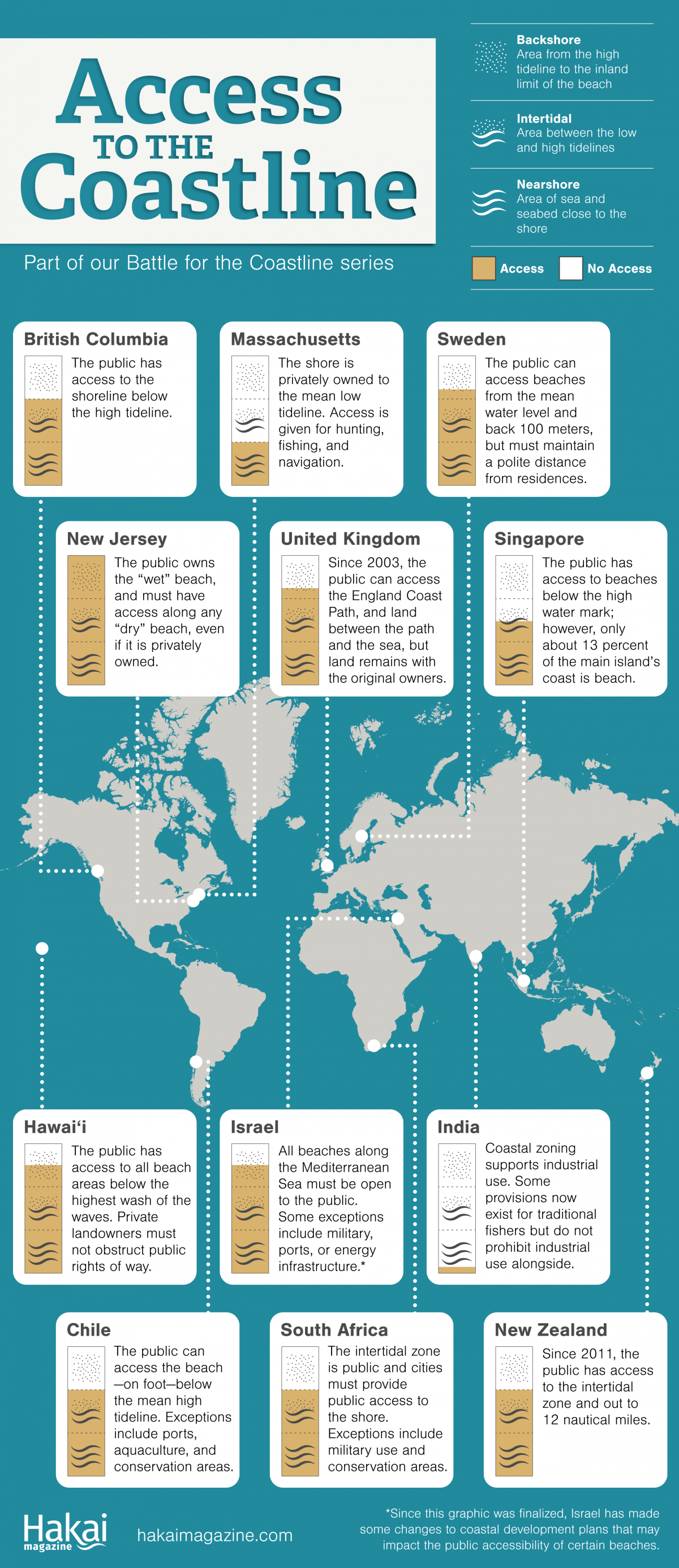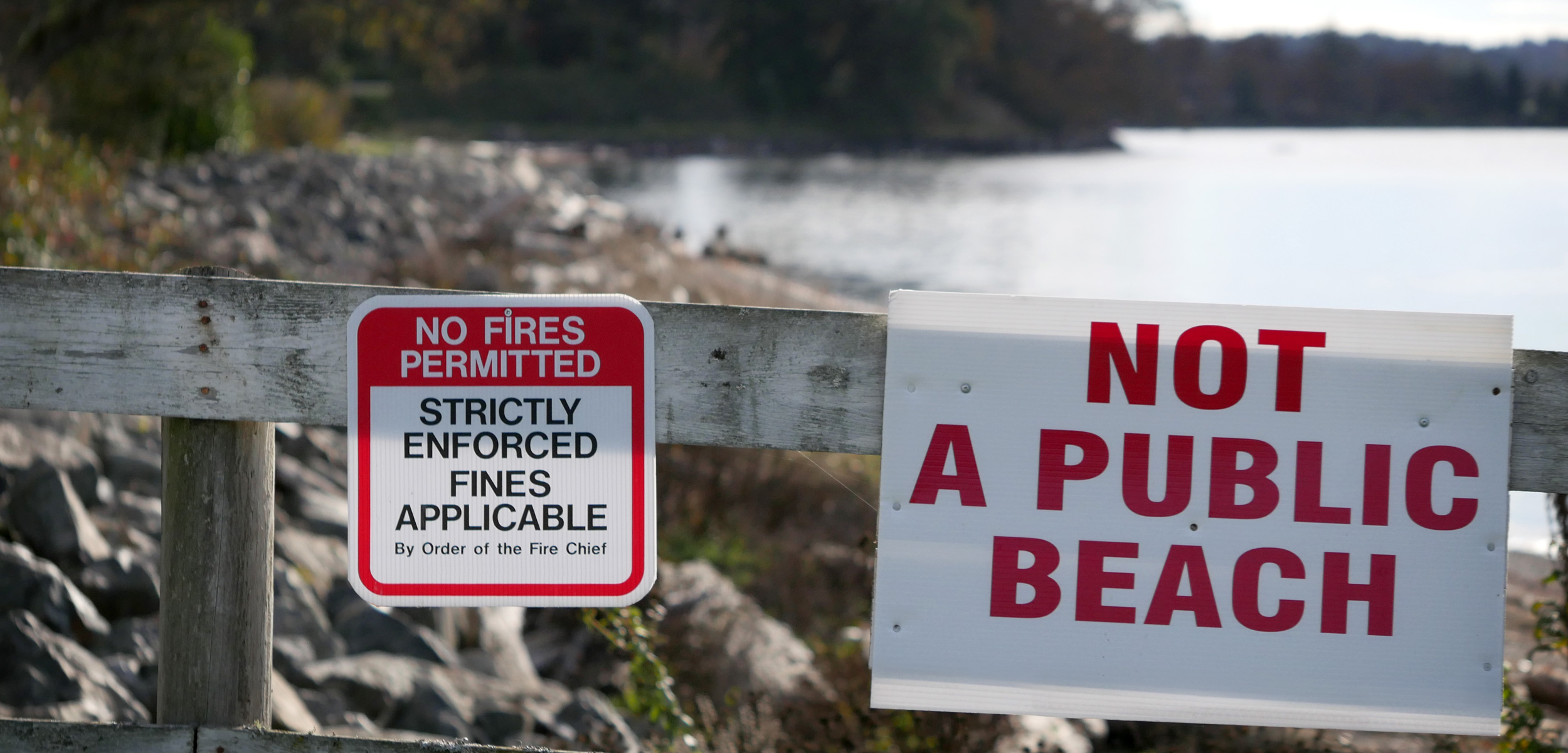Infographic: Get the Hell Off My Beach
Coastal access laws around the world.
Article body copy
If Fyodor Dostoevsky had spent his middle years in 21st-century Malibu instead of a 19th-century Siberian prison camp, the famed novelist may have found himself musing that, instead of its prisons, “the civilization of a society” can be judged by its public access to the coastline. In the exclusive seaside neighborhood of Malibu, as in the rest of California, the public is officially allowed on the beach below the high tideline and can access routes to get there, yet people face private security forces, misleading signs, and structures (even fake garages) blocking that access. Private landowners have effectively co-opted the commons at the expense of the public, creating conflict, and no one has stopped them. It’s a Dostoevskian theme—the rich and powerful versus the less rich and less powerful—and it extends beyond Malibu, showing up again and again along the coast.
Coastal communities place such value on their shores that most governments explicitly legislate its use. As the map below shows, this legislation varies, from restrictive property rights and zoning laws to special acts governing public access. Do these laws prioritize the public, private landowners, or corporate interests? The laws often have a complex relationship with the society behind them, incorporating its social norms, class structures, and geography.
Take Israel and Singapore, two countries with relatively similar populations (8.1 million and 5.4 million) and coastline lengths (273 and 193 kilometers). Much of Israel’s Mediterranean coast is beach, and therefore public, with no buildings or vehicles allowed within 100 meters of the coast. Singapore has a similar law: beaches are public below the high tideline. But Singapore’s main island only has about 25 kilometers of beach, which means that while the laws are similar, they give access to very different lengths of coastline in these two countries. Plus, it may explain why Singapore has many private beaches on nearby islands. Even with progressive laws, the nature of the land itself can skew coastal access in favor of those who can pay for it.
Landforms shape coastal access, but so too do social priorities. In rapidly developing India, the public technically has a right to the shore, but the country prioritizes industrial development with pipelines and roads often barricading the beach. In more public-minded Sweden, people stroll, fish, or camp on the shore—even on private property, as long as they are polite and unobtrusive to residents.
Even with public-friendly laws, pressure from privacy-seeking landowners can be intense. Scotland’s coast is publicly accessible under a long tradition, adopted as law in 2003, called the “right to roam,” yet business mogul Donald Trump attempted to block this access on his elite Scottish golf course.
Laws govern who can access, use, or enjoy the coastline, and sometimes they, like society, can place the rich or powerful ahead of the public. But both laws and societies can evolve; in Malibu, there’s even an app for that. Beach access activists created the popular app “Our Malibu Beaches,” which shows people where to get onto the beach and enjoy their legal right to the sand. Dostoevsky would have approved.


